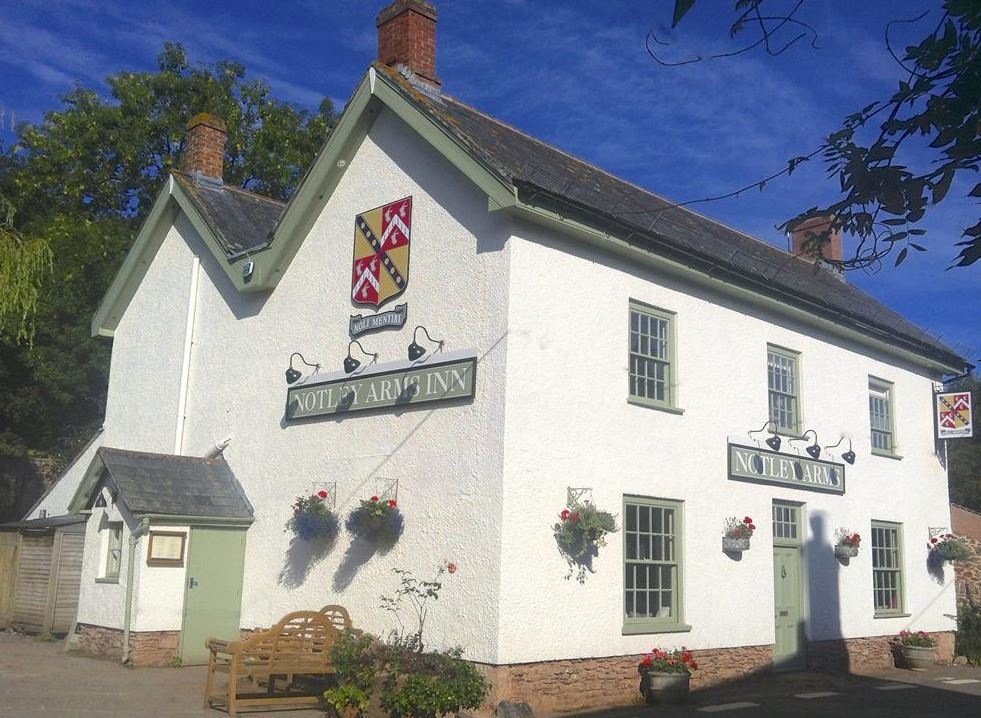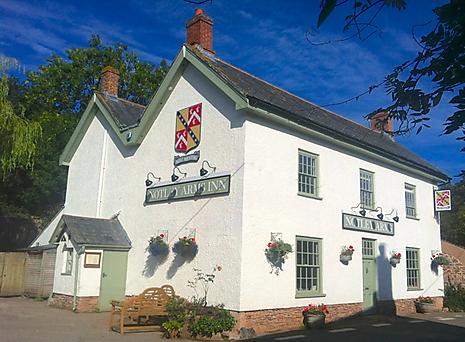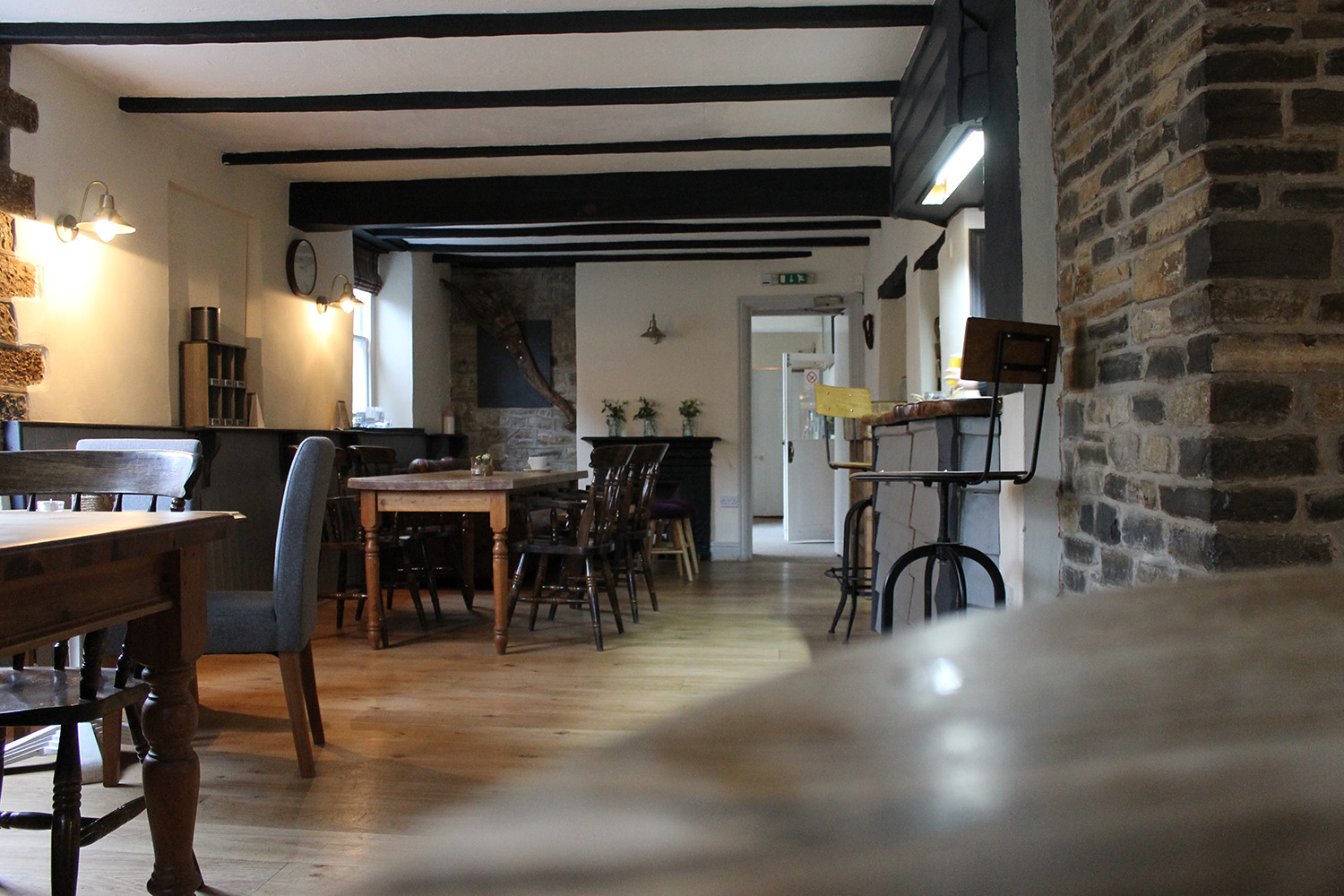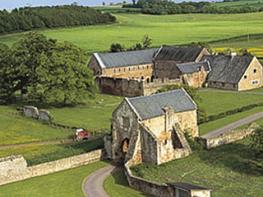You’ll probably want to pull up the drawbridge at the Castle of Comfort, a characterful hotel…
A Quantock ramble

Stretch your legs on this walk along the extensive Quantock ridge.
7.25 miles (11.7kms)
About the walk
Although Somerset was more generally noted for the production of fleeces and woollen cloth, Holford, for a time, became a centre for silk production. Towards the end of the 16th century, a group of Huguenots settled in the village, Protestants fleeing France to escape persecution from the Catholic majority. They established a small industry using silk imported from their homeland as well as some produced locally by silk worm hatcheries at Nether Stowey.
Spinning and weaving of both wool and silk were originally cottage industries, although fulling mills and dye houses were often set up beside fast-flowing streams to finish the cloth. With the development of the factory system during the 18th century, many old watermills were converted to weave cloth, but during the 19th century the silk market declined and wool production gradually moved to larger factories, which could be powered by steam.
Other industries around the village included a large tannery, situated where the Combe House Hotel now stands, while copper ore was mined at nearby Dodington. The surrounding woodland provided employment too, producing bark, small wood, charcoal and timber, a saw-pit having been identified near the silk mill.
Littered with ancient monuments
Climbing onto the hills, the walk explores the landscape of a much older history, passing several Bronze Age tumuli, prehistoric ridge-ways, a beacon site and an impressive Iron Age settlement fort on Dowsborough Hill. Like the other upland areas of Somerset, the Quantocks are littered with ancient monuments that imply an extensively scattered population, who farmed with sufficient success to have the time, energy and know-how to create structures that have remained prominent for over 3,500 years.
Although the overwhelming feature of Dowsborough is the extensive earth bank and ditch defence, the Iron Age builders were reworking a site that was already ancient and incorporated a Bronze Age tumulus situated at the western end. There is also a suggestion of late or post Roman occupation, the hill probably served as a Saxon lookout against Viking raids along the coast. It was put to similar use during the Second World War, this time watching for Luftwaffe bombers heading for the docks and factories of Bristol.
Walk directions
Follow the lane left past Holford Bowling Green and over a stream. At the sharp bend beyond, leave up a wooded track beside a curious 'dog pound'. Beyond a gate, bear left at a fork to rise steeply along the spur of Longstone Hill, where a stand of pine is a memorial to Holford and Kilve's war dead. Keep climbing with the main track, later branching left at a fork to continue over the crest of the hill. The path eventually falls to a junction by a small pool at Bicknoller Post.
Bear left above the head of Sheppard's Combe to a broader track and go left again. Reaching a shallow dip, bear off right on a rising grass track. Where it bends left at the crest of the hill, take the first track leaving right and then fork left towards the raised mound of Thorncombe Barrow.
Return to the main track and continue round the bend. Ignore paths dropping to the right carry on along the broad spine of Thorncombe Hill. Beyond the high-point, the way dips above the head of Slaughterhouse Combe before merging with the lower track. At a fork, either branch leads to Halsway Post.
Pass the oak post on your left to mount a stile/gate just beyond. Follow a climbing path beside the left fence to a junction by another stile/gate. To the right is the site of Hurley Beacon, but the onward route lies over the stile. Ignore the crossing track and head to the next top, Black Hill, marked by a trig column.
Bear left past the column, cross a broad track and walk forward on a falling green trail to a junction in front of Wilmot's Pool. Swing left past the pond and go left again as the path splits. Crossing a broad track, keep ahead past a lone hawthorn, gently descending the flank of Frog Hill. The gradient later steepens into the wooded valley of Lady's Combe. At the bottom, drop right across a stream and turn right again beside it. Shortly parting from the stream, the path climbs more determinedly to a junction. Go left to continue uphill. Ignore side paths, but keep right at a fork, shortly encountering another cross-path. Turn left for the final pull onto Dowsborough, cutting through an impressive ditch and earthen bank defence to walk inside the fort's northern boundary.
Breaking into a small clearing towards the far end, turn out of the fort through a breach in the rampart and head downhill on a clear path across open heath. Keep ahead at a junction over the final top, Woodlands Hill. Continue towards Holford, dropping into woodland beside an ancient boundary of beech trees. Leave the woods onto a lane near the main road and go left, climbing over a rise to a junction at the edge of the village. Walk right to the next junction and swing sharp left back towards the car park, crossing the stream that powered Holford's silk mill.
Additional information
Heath and woodland paths, but may be confusing in mist
Rolling open heath and deep, wooded combes
Dogs on short leads between 1 March and 31 July
OS Explorer 140 Quantock Hills & Bridgwater
Woodland car park (free) behind Holford village at foot of Hodder's Combe
None on route
WALKING IN SAFETY
Read our tips to look after yourself and the environment when following this walk.
Find out more
Also in the area
About the area
Discover Somerset
Somerset means ‘summer pastures’ – appropriate given that so much of this county remains rural and unspoiled. Ever popular areas to visit are the limestone and red sandstone Mendip Hills rising to over 1,000 feet, and by complete contrast, to the south and southwest, the flat landscape of the Somerset Levels. Descend to the Somerset Levels, an evocative lowland landscape that was the setting for the Battle of Sedgemoor in 1685. In the depths of winter this is a desolate place and famously prone to extensive flooding. There is also a palpable sense of the distant past among these fields and scattered communities. It is claimed that Alfred the Great retreated here after his defeat by the Danes.
Away from the flat country are the Quantocks, once the haunt of poets Samuel Taylor Coleridge and William Wordsworth. The Quantocks are noted for their gentle slopes, heather-covered moorland expanses and red deer. From the summit, the Bristol Channel is visible where it meets the Severn Estuary. So much of this hilly landscape has a timeless quality about it and large areas have hardly changed since Coleridge and Wordsworth’s day.
Nearby stays
Restaurants and Pubs
Nearby experiences
Recommended things to do
Why choose Rated Trips?
Your trusted guide to rated places across the UK
The best coverage
Discover more than 15,000 professionally rated places to stay, eat and visit from across the UK and Ireland.
Quality assured
Choose a place to stay safe in the knowledge that it has been expertly assessed by trained assessors.
Plan your next trip
Search by location or the type of place you're visiting to find your next ideal holiday experience.
Travel inspiration
Read our articles, city guides and recommended things to do for inspiration. We're here to help you explore the UK.

















